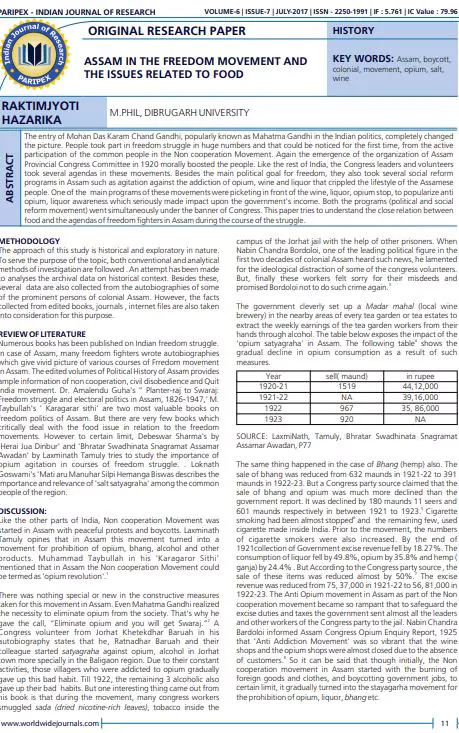‘Quit India Movement In Assam’ PDF Quick download link is given at the bottom of this article. You can see the PDF demo, size of the PDF, page numbers, and direct download Free PDF of ‘Quit India Movement In Assam’ using the download button.
Quit India Movement In Assam PDF Free Download

Quit India Movement In Assam
Women in India have been taking an active part in politics since ancient times. Women like Gargi and Maitreyi played an active role in Indian politics during the time of the Vedas.
Women like Razia and Nur Jahan looked after the administration of the Sultanate and the Mughal Empire during the Sultanate’s reign in the following period.
But till the 19th century, the participation of women in the state policy of the country was limited to this. Members of royal and noble families.
The socio-economic condition of that time was not conducive for women to participate in the political arena. All India Women Organization Council like Bharat Mahila was established in 1904 by Bharat Stree Mahamandal and Mahila Bhartiya Sangh. Established in 1910 and 1917 respectively.
In 1920, Mohandas Karamchand Gandhi launched the Non-Cooperation Movement as the only means of driving out the British, who had occupied the country as a result of the Battle of Plassey in 1757 and ruled it for nearly 200 years.
From the days of consolidation and expansion of the British imperial scheme In India, the spirit of non-compromise and anti-imperialism prevailed in the country. East India Company – A British commercial company that established rule in India, primarily concerned with making profits.
They were mainly motivated to earn maximum profit through minimum capital investment. So it was the exploitation of local resources and the expansion of private trade.
The people of India tried to start a protest against it. The first major resistance of its kind came in the form of the Revolt of 1857.
Although it was the first major rebellion, the struggle of the people of India to get freedom from British imperialism was still an unsuccessful organizational weakness.
The Indian National Congress was established in 1885. It provided a common platform for people from all parts of the country to meet and draw up a common program of activity for the freedom struggle.
It was at this stage M.K. is devoted to. Gandhiji started his first non-cooperation movement in the form of “Satyagraha”. The two main elements of “Satyagraha” were truth and non-violence.
He defined it as spiritual power, or love power, The power that arises from truth and non-violence. “Satyagrahis” would refuse to do anything they considered wrong.
He will remain calm under any circumstances and provocations. he will oppose the Wicked, but I will not hate the wicked.
He would stick to the truth, not by inflicting pain on the opponent, self-acknowledgment of the pain he hoped would rouse the conscience of the wicked. to get success
The Satyagrahi should totally give up fear, hatred, and falsehood. According to him, passive resistance was the weapon of the weak while Satyagraha was the weapon of the strong. In order to make the movement successful, Gandhiji suggested the steps to be adopted in “Satyagraha”.
1. Surrender of titles and all honorary offices under the government.
- Withdrawal of children from schools and colleges.
- Boycott of courts by lawyers and litigants.
- Refusal of voting by candidates and electors from standing for election to the new Legislative Councils.
- .Boycott foreign goods.
At the same time, he emphasized the revival of hand-spinning and weaving, the removal of untouchability, the raising of the status of women, and promoting Hindu-Muslim unity to face the foreign government with a united stand. He once wrote about the India of his dream in these words: I will work for an India in which the poorest will feel that this is their country, that they have contributed to its making. - effective voice, an India in which there would be no upper class and lower class people, an India in which all communities would live in perfect harmony… in such an India there could be no place for the curse of untouchability… Will get equal rights… This is the India of my dreams. As far as the role of Indian women in the non-cooperation movement is concerned, it can be said that by 1930 women had entered the freedom struggle. The movement was somewhat limited. By this time, some women, mostly C.R. Some college students from the families of national leaders such as Das and Motilal Nehru, or in larger cities, participated in public political demonstrations. That’s why in “Young India” on 30th April 1930
- Gandhiji appealed to Indian women to spin yarn on charkhas and to come out of their domestic seclusion to picket government institutions and shops selling foreign goods or liquor. As a result, more and more women joined the movement and were arrested. In Delhi alone, a socially conservative city in those days, 1600 women were jailed for political activities.4 In Bombay, a large number of middle-class women joined the movement.5 That is why British observers Wrote that if the Civil Disobedience Movement had achieved nothing else, it had made an enormous contribution to the social emancipation of Indians
- women. India’s easternmost state Assam joined the national mainstream in 1921 with the formation of the Assam Provincial Congress Committee (APCC). Gandhi’s leadership of the National Congress in 1920 and the call for non-cooperation movement attracted a large number of men and women
| Language | English |
| No. of Pages | 2 |
| PDF Size | 0.05 MB |
| Category | Education |
| Source/Credits | – |
Related PDFs
Telangana Pathakalu PDF In Telugu
Role Of Assam In Freedom Movement PDF
Desha Bhakthi Geethegalu PDF In Kannada
Quit India Movement In Assam PDF Free Download
